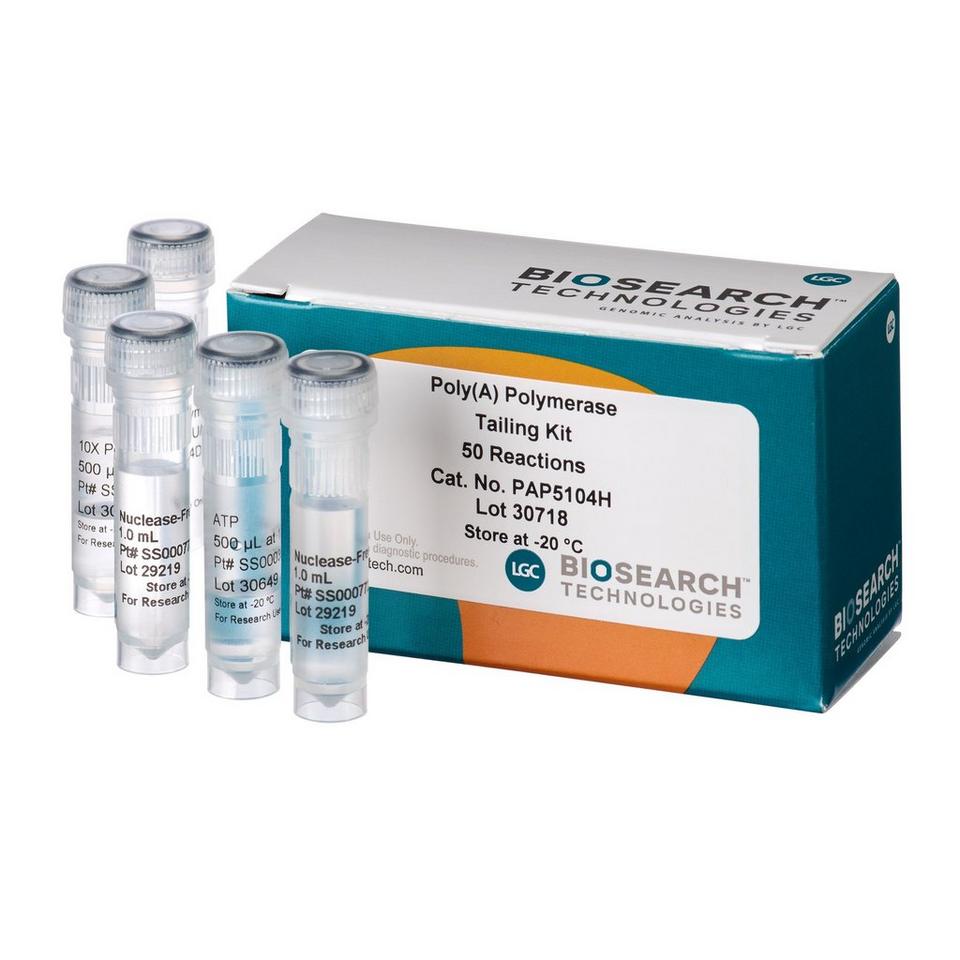Poly(A) Polymerase uses ATP as a substrate for template-independent addition of adenosine monophosphate to the 3'-hydroxyl termini of RNA molecules.1 The Poly(A) Polymerase Tailing Kit provides the enzyme and other reagents for quickly and easily adding a 'poly(A) tail' to the 3'-end of any RNA. Poly(A) Polymerase is encoded by an E. coli gene that has been cloned in a plasmid and overexpressed in an E. coli strain.

Unit Definition
One unit of Poly(A) Polymerase catalyzes the incorporation of 1 nanomole of AMP into acid-insoluble form in 10 minutes at 37°C in a reaction mixture consisting of 50 mM Tris-HCl (pH 8.0), 250 mM NaCl, 10 mM MgCl2, and 1 mM ATP.
Storage Buffer
50% glycerol containing 50mM Tris-HCl (pH 7.5), 100 mM NaCl, 1 mM DTT, 0.1 mM EDTA, and 0.1% Triton® X-100.
10X Poly(A) Reaction Buffer
0.5 M Tris-HCl (pH 8.0), 2.5 M NaCl, and 100mMMgCl2. A separate 10mM ATP Solution is also provided
Quality Control
Poly(A) Polymerase is tested for polyadenylation of RNA in vitro. It is free of detectable exo- and endonuclease and RNase activity.
If you cannot find the answer to your problem then please contact us or telephone +44 (0)1954 210 200